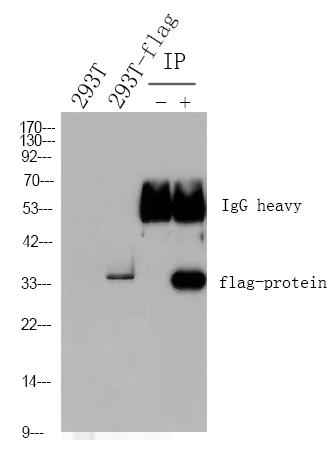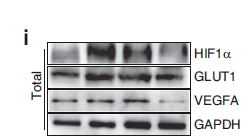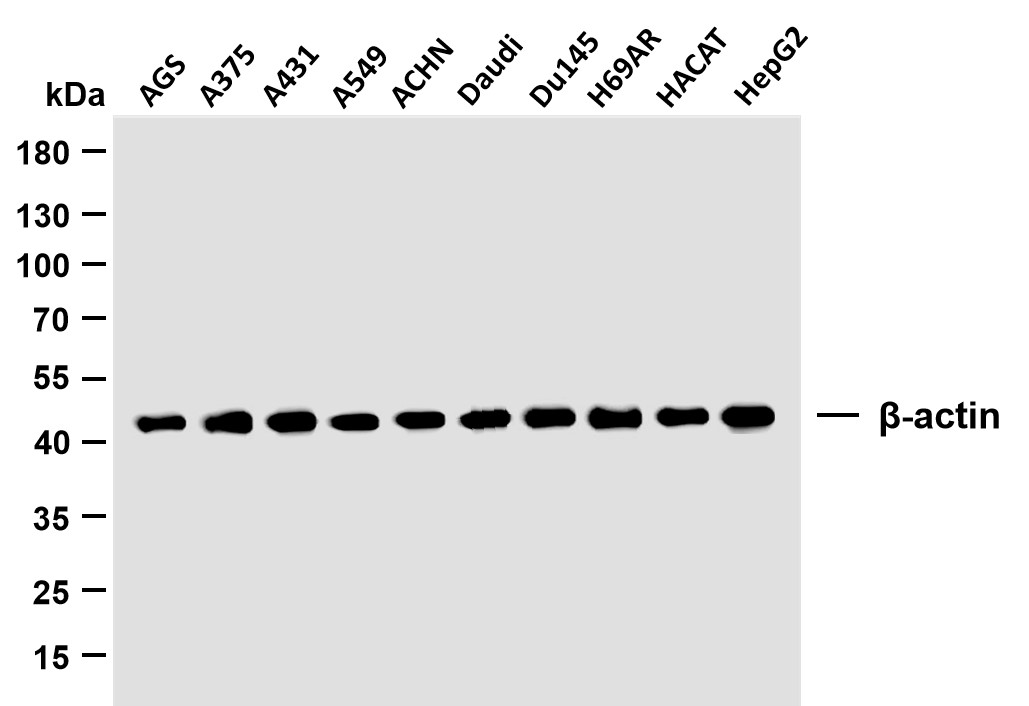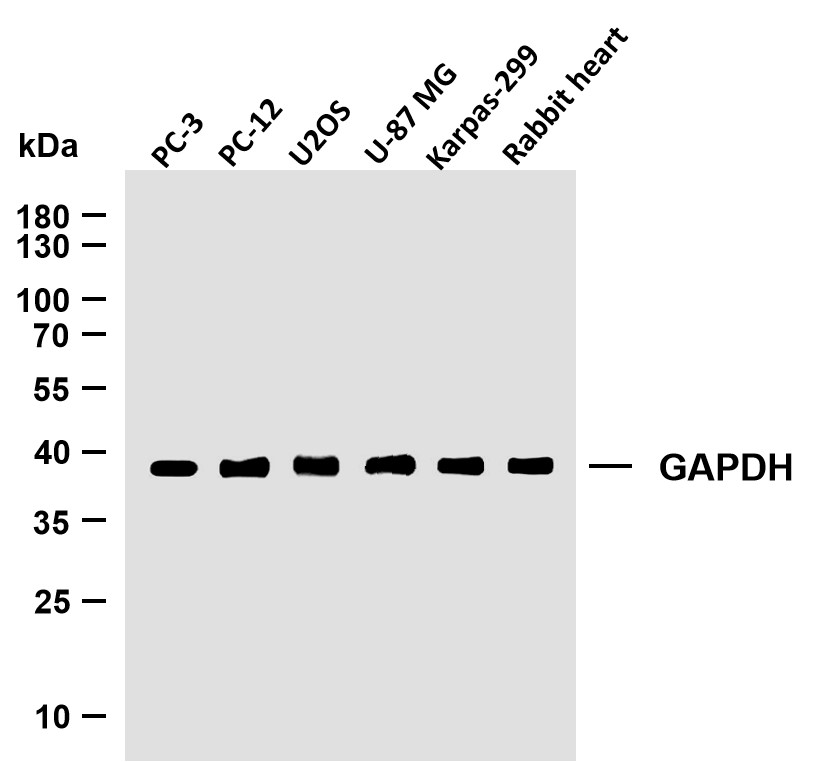
Catalog: YT4861
Size
Price
Status
Qty.
200μL
$450.00
In stock
0
100μL
$280.00
In stock
0
40μL
$150.00
In stock
0
Add to cart


Collected


Collect
Main Information
Target
V-ATPase H
Host Species
Rabbit
Reactivity
Human, Mouse
Applications
WB, IHC, IF, ELISA
MW
55kD (Observed)
Conjugate/Modification
Unmodified
Detailed Information
Recommended Dilution Ratio
WB 1:500-1:2000; IHC 1:100-1:300; ELISA 1:20000; IF 1:50-200
Formulation
Liquid in PBS containing 50% glycerol, 0.5% BSA and 0.02% sodium azide.
Specificity
V-ATPase H Polyclonal Antibody detects endogenous levels of V-ATPase H protein.
Purification
The antibody was affinity-purified from rabbit antiserum by affinity-chromatography using epitope-specific immunogen.
Storage
-15°C to -25°C/1 year(Do not lower than -25°C)
Concentration
1 mg/ml
MW(Observed)
55kD
Modification
Unmodified
Clonality
Polyclonal
Isotype
IgG
Related Products
Antigen&Target Information
Immunogen:
The antiserum was produced against synthesized peptide derived from human ATP6V1H. AA range:341-390
show all
Specificity:
V-ATPase H Polyclonal Antibody detects endogenous levels of V-ATPase H protein.
show all
Gene Name:
ATP6V1H
show all
Protein Name:
V-type proton ATPase subunit H
show all
Other Name:
ATP6V1H ;
CGI-11 ;
V-type proton ATPase subunit H ;
V-ATPase subunit H ;
Nef-binding protein 1 ;
NBP1 ;
Protein VMA13 homolog ;
V-ATPase 50/57 kDa subunits ;
Vacuolar proton pump subunit H ;
Vacuolar proton pump subunit SFD
CGI-11 ;
V-type proton ATPase subunit H ;
V-ATPase subunit H ;
Nef-binding protein 1 ;
NBP1 ;
Protein VMA13 homolog ;
V-ATPase 50/57 kDa subunits ;
Vacuolar proton pump subunit H ;
Vacuolar proton pump subunit SFD
show all
Background:
This gene encodes a component of vacuolar ATPase (V-ATPase), a multisubunit enzyme that mediates acidification of intracellular organelles. V-ATPase-dependent organelle acidification is necessary for multiple processes including protein sorting, zymogen activation, receptor-mediated endocytosis, and synaptic vesicle proton gradient generation. The encoded protein is the regulatory H subunit of the V1 domain of V-ATPase, which is required for catalysis of ATP but not the assembly of V-ATPase. Decreased expression of this gene may play a role in the development of type 2 diabetes. Alternatively spliced transcript variants encoding multiple isoforms have been observed for this gene. [provided by RefSeq, May 2012],
show all
Function:
Function:Subunit of the peripheral V1 complex of vacuolar ATPase. Subunit H activates the ATPase activity of the enzyme and couples ATPase activity to proton flow. Vacuolar ATPase is responsible for acidifying a variety of intracellular compartments in eukaryotic cells, thus providing most of the energy required for transport processes in the vacuolar system (By similarity). Involved in the endocytosis mediated by clathrin-coated pits, required for the formation of endosomes.,similarity:Belongs to the V-ATPase H subunit family.,subunit:V-ATPase is an heteromultimeric enzyme composed of a peripheral catalytic V1 complex (components A to H) attached to an integral membrane V0 proton pore complex (components: a, c, c', c'' and d). Interacts with HIV-1 Nef protein and AP2M1.,tissue specificity:Widely expressed.,
show all
Cellular Localization:
Cytoplasmic vesicle, clathrin-coated vesicle membrane ; Peripheral membrane protein .
show all
Tissue Expression:
Widely expressed.
show all
Research Areas:
>>Oxidative phosphorylation ;
>>Metabolic pathways ;
>>Lysosome ;
>>Phagosome ;
>>mTOR signaling pathway ;
>>Synaptic vesicle cycle ;
>>Vibrio cholerae infection ;
>>Epithelial cell signaling in Helicobacter pylori infection ;
>>Tuberculosis ;
>>Human papillomavirus infection ;
>>Rheumatoid arthritis
>>Metabolic pathways ;
>>Lysosome ;
>>Phagosome ;
>>mTOR signaling pathway ;
>>Synaptic vesicle cycle ;
>>Vibrio cholerae infection ;
>>Epithelial cell signaling in Helicobacter pylori infection ;
>>Tuberculosis ;
>>Human papillomavirus infection ;
>>Rheumatoid arthritis
show all
Signaling Pathway
Cellular Processes >> Transport and catabolism >> Phagosome
Cellular Processes >> Transport and catabolism >> Lysosome
Organismal Systems >> Nervous system >> Synaptic vesicle cycle
Human Diseases >> Immune disease >> Rheumatoid arthritis
Environmental Information Processing >> Signal transduction >> mTOR signaling pathway
Reference Citation({{totalcount}})
Catalog: YT4861
Size
Price
Status
Qty.
200μL
$450.00
In stock
0
100μL
$280.00
In stock
0
40μL
$150.00
In stock
0
Add to cart


Collected


Collect
Recently Viewed Products
Clear allPRODUCTS
CUSTOMIZED
ABOUT US
Toggle night Mode
{{pinfoXq.title || ''}}
Catalog: {{pinfoXq.catalog || ''}}
Filter:
All
{{item.name}}
{{pinfo.title}}
-{{pinfo.catalog}}
Main Information
Target
{{pinfo.target}}
Reactivity
{{pinfo.react}}
Applications
{{pinfo.applicat}}
Conjugate/Modification
{{pinfo.coupling}}/{{pinfo.modific}}
MW (kDa)
{{pinfo.mwcalc}}
Host Species
{{pinfo.hostspec}}
Isotype
{{pinfo.isotype}}
Product {{index}}/{{pcount}}
Prev
Next
{{pvTitle}}
Scroll wheel zooms the picture
{{pvDescr}}


















